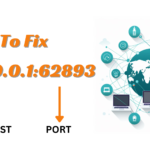Scaling for Success: How Localization Agencies Manage Multilingual Projects Across Continents
- 1 The Importance of Localization in Global Business
- 2 Key Challenges in Managing Multilingual Projects
- 2.1 1. Handling Multiple Languages and Dialects
- 2.2 2. Managing Distributed Teams Across Time Zones
- 2.3 3. Ensuring Consistency Across Languages
- 2.4 4. Adapting to Local Legal and Regulatory Requirements
- 2.5 5. Quality Assurance and Testing
- 3 Tools and Technology: Enabling Efficient Localization
- 4 Conclusion: The Future of Localization
Companies do not have to stay at home in the globalized economy anymore. Whether it’s a tech startup looking to branch out or a company heading overseas, the demand for cross-border messaging is massive. Local content that resonates with multiple audiences is at the core of these international expansions. This is where a localization company can help businesses grow because they can target products, services, and messaging to fit the specific linguistic and cultural needs of markets.
Running multilingual projects across continents is no joke, though. Localization firms must work on many fronts, dealing with different languages and dialects, regional differences, and managing cross-timezone teams. This post will discuss how the right localization firms handle such challenging work and facilitate seamless delivery globally.
The Importance of Localization in Global Business
Localization is more than just translation. It involves adapting content to fit a target market’s cultural, linguistic, and legal expectations. Content must resonate with local audiences, from marketing materials and websites to software applications and legal documents. An effective localization strategy helps businesses connect with their customers, build trust, and ultimately drive success in international markets.
For instance, while a word-for-word translation might suffice for certain technical documents, a marketing campaign aimed at consumers must be carefully crafted to reflect local idioms, cultural references, and societal norms. A localization company ensures that a brand’s voice remains consistent while being culturally relevant in each target market.
Key Challenges in Managing Multilingual Projects
Managing multilingual projects across multiple continents is extremely difficult. Localization companies must confront some hurdles to finish work on time, within budget, and of high quality.
1. Handling Multiple Languages and Dialects
Multilingualism and dialect-switching are essential problems of every localization effort. It is not uncommon for a worldwide project to have dozens of languages and linguistic quirks. Spanish in Spain is not the same as Spanish in Mexico, for instance, and French in Canada is not the same as French in France. The key to a reasonable localization effort isn’t only translating content into suitable languages and adapting content for local dialects.
Localization firms usually hire native speakers with subject matter expertise who are familiar with regional vocabulary, voice, and cultural differences. This is an inequitable guarantee that the message will be linguistically correct and culturally correct for the readership.
2. Managing Distributed Teams Across Time Zones
Projects involving localization must be managed by a close-knit team of translators, project managers, content producers, and QA professionals. These teams tend to be scattered in different countries, continents, and time zones. Planning is a logistical nightmare when you don’t know how.
This problem is solved by localization firms using project management systems that enable real-time collaboration and messaging. Cloud tools allow team members to stay connected, share documents, and communicate at any time, anywhere. Some agencies also use “follow-the-sun” models, with two teams in different time zones working on the same project simultaneously, which translates to 24-hour productivity and faster delivery times.
3. Ensuring Consistency Across Languages
Consistency is essential for maintaining brand identity in multiple languages and regions. However, this can be challenging if numerous translators and teams work on different sections of the same document. That’s particularly true for innovative content like marketing ads or user interfaces, in which messaging must be consistent but culturally malleable.
Localization firms implement translation memory tools and glossaries that retain translated versions. These devices allow translators to draw on the work of others and keep words and phrases consistent. Secondly, style guides are typically written for each project, containing guidelines for tone, formatting, style, etc.
4. Adapting to Local Legal and Regulatory Requirements
In addition to linguistic and cultural adaptations, corporations must also adhere to the local laws and regulations regarding their content. This becomes critical in the financial, medical, and e-commerce sectors, where laws vary drastically from one country to the next.
Firms that localize the content consult with lawyers to ensure it’s based on each market’s applicable regulatory regime. This can include revising disclaimers, terms of service, privacy notices, or other legal documents to comply with the country’s laws in which the content is to be made public.
5. Quality Assurance and Testing
QA is essential for any localization project. It involves translating content and testing the product to ensure it works appropriately and accurately in your target audience. We see this, especially in software and web content, where increasing text size, layout modification, and character encoding errors contribute to poor readability.
Many localization companies have very stringent QA processes where translations are checked in the final version. These could be linguistic QA (audience translations by native speakers) and functional QA (engineers test the software or website to ensure it works).
Tools and Technology: Enabling Efficient Localization
Technological advancements changed the localization game by making it easier for agencies to work on large-scale projects. Here are some of the tools that help you with localization:
- Translation Management Systems (TMS): TMS enables agencies to coordinate different aspects of localizations, such as assigning work, tracking progress, and storing translation memories. A good TMS is also integrated with other tools, like content management systems (CMS), for a smooth localization process.
- MT: Human translators are essential for quality localization, but machines can efficiently execute tasks such as high-volume projects. Generally, MT is employed by many localization companies for rough drafts or unique content, with humans then verifying the correctness.
- Computer-Assisted Translation (CAT) Tools: CAT tools accelerate translators’ work by archiving previously translated phrases and allowing the translators to reuse them as needed. These resources also facilitate project-to-project consistency via glossaries and style guides.
Conclusion: The Future of Localization
The more companies open new markets, the more professional localization services are needed. Localization agencies must stay flexible and leverage new technologies to cope with progressively multilingual, continent-spanning projects. Addressing these obstacles efficiently distinguishes successful localization firms from competitors in the modern global marketplace.
With a heavy focus on cultural fitting, linguistic clarity, and compliance, localization agencies enable companies to align their global goals with local requirements to make their message universally accessible. In doing so, they help businesses scale for success worldwide.

















